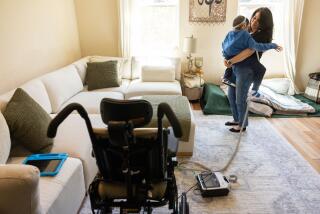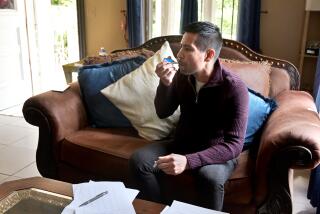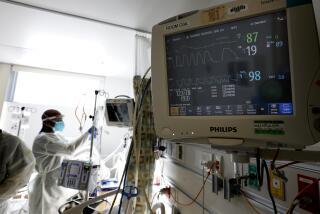Home Care Can Cut AIDS Cost, Study Reveals
- Share via
Patients suffering from complications of the AIDS virus can be treated at home for hundreds of dollars a day less than those who enter hospitals, according to preliminary results, released Monday, of a study of 131 Los Angeles AIDS patients.
Jack Little, director of the research division of AIDS Project Los Angeles, said that home nursing care for the patients costs an average of $71.65 a day, compared to $963 a day for AIDS patients in private hospitals.
Patients treated at home also received much-needed emotional support from friends and relatives, he said.
“When care can be accommodated at home, it appears to be the most cost-effective and satisfying to the patient as well,” Little said.
The results, confirming earlier studies, followed an eight-month study of patients enrolled in AIDS Project Los Angeles’ Home Health, Attendant and Hospice Care pilot project that began last May. Under the $1.1-million program, funded by the state, the 131 patients were supplied attendants and were also cared for by visiting nurses.
Initial results were announced to buttress support for an Assembly bill, authored by Assemblyman John Vasconcellos (D-Santa Clara), that would ask the state Department of Health Services to allow Medi-Cal coverage for home care related to acquired immune deficiency syndrome.
Overall, the state legislative analyst’s office has said that within four years, the public and private cost of drugs, physician services and hospital care for AIDS patients will range between $255 million and $406 million, a fourfold increase over last year’s spending.
Currently, an estimated 25% to 30% of AIDS patients depend on Medi-Cal to cover their medical bills, and health officials expect the percentage to grow in future years. Medi-Cal does not pay for home care, however, and patient advocates have argued that the refusal to pay forces many patients to enter hospitals when they could be cared for at home.
With the attendants, the patients were able to spend an average of 16 days more at home than they otherwise would have been able to, Little said.
“In many instances, when a person is ill, there can be intervention at home (that prevents hospitalization),” he said, “Also, the hospital days have been shortened.”
The home treatments included care for bouts of pneumocystis Carinii pneumonia and Kaposi’s sarcoma.
Of those studied, most were white males, ranging from 1 year to 68 years of age. The study also paid testimony to the virulence of the disease: Of the 131 patients, 86 are dead.
More to Read
Sign up for Essential California
The most important California stories and recommendations in your inbox every morning.
You may occasionally receive promotional content from the Los Angeles Times.














